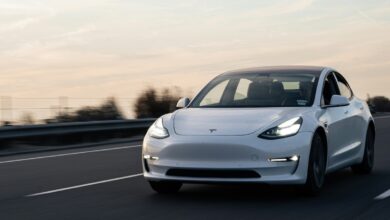The State of the Electric Vehicle Charging Infrastructure
The global electric vehicle population reached 3 million units at the end of 2017, which represents approximately 0.23 percent of the global vehicle population. Electric vehicle producers have responded to consumer’s range anxiety by increasing the available range per charge in their vehicles to more than 200 miles. However, ultimately the deployment of electric vehicles will depend on the deployment of ubiquitous chargers, according to IDTechEx Research.
IDTechEx estimates that approximately 60 million electric vehicle chargers (both public and private) could be deployed in the global market by 2029.
IDTechEx Research’s new report Electric Vehicle Charging Infrastructure 2019-’29 presents a 10-year market forecast through 2029 of electric vehicle chargers by region (U.S., Europe, China, and Japan) and by type of charger (public or private). The report provides profiles of leading companies developing and commercializing electric vehicle charging infrastructure.
State-of-the-Art Technology
The IDTechEx report presents an overview of the state of development of technologies for electric vehicle charging including conductive, inductive, and capacitive charging among others. The report presents the different charger topologies by different levels (Level 1 to Level 3). A comprehensive overview of the main charging standards (Chademo, CCS, Tesla, China GB dtd, India Bharat std), communication protocols and standards including an analysis of Vehicle to Grid communication interphase.
Some of the key enabling technologies are presented such as semiconductor technology, fast charging, battery swapping and robotic charging which will have a role in new mobility paradigms.
Vehicle Charging & Renewable Energy
The EV charging infrastructure value chain will evolve as the integrating of both electric vehicles and renewable energy goes forward. Challenges and opportunities arise when this happens, as there will be increasing requirements for operating the electricity network in a smarter way, according to IDTechEx Research. For this purpose, concepts like demand-side management and key enabling technologies like energy storage will have a key role.
The emergence of the autonomous, shared vehicle and ride-hailing platforms will change the needs of charging. For instance, it’s unknown whether an autonomous vehicle will still require a man-operated electric vehicle charger.
“The answer is ‘probably not,’ as initiatives are underway to replace man-operated charging infrastructure,” IDTechEx stated in a news release. “This includes technologies like inductive charging and robotic charging. Some speak about the possibilities of capacitive charging as well, a new concept for charging electric vehicles through electric fields rather than magnetic, being developed by ARPA-E. One very interesting start-up is integrating magnetizable materials in concrete for wirelessly charging electric vehicles dynamically.”



